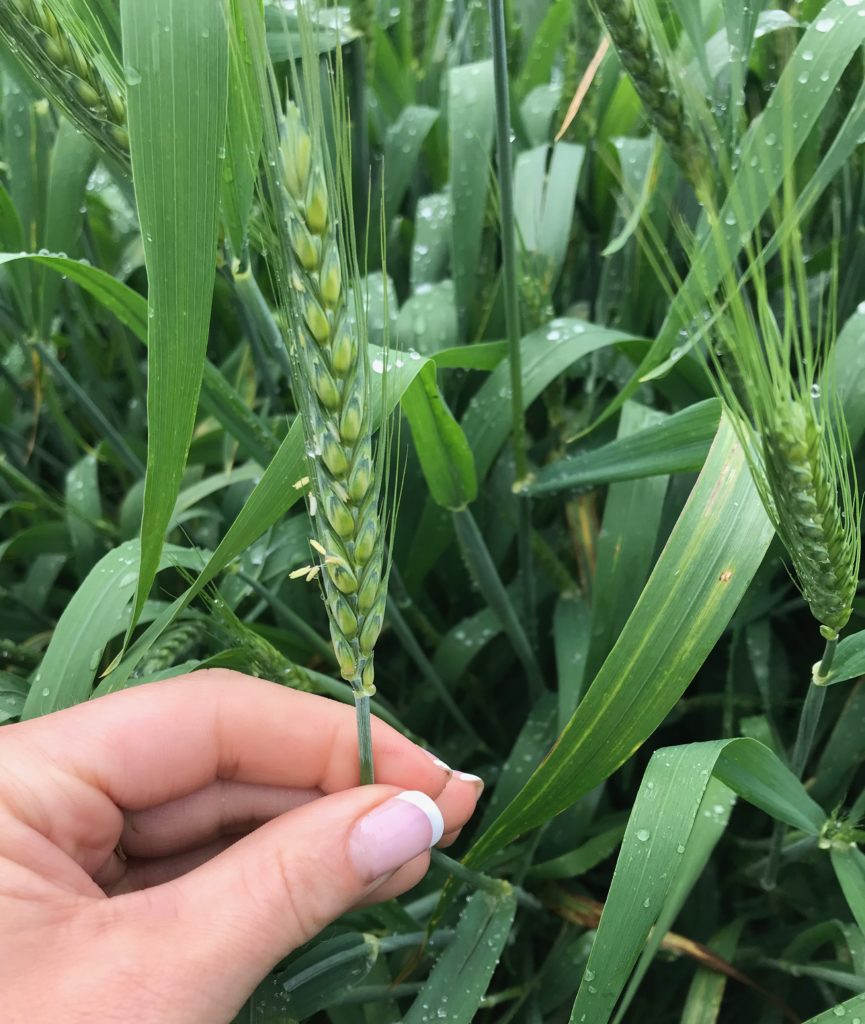The week of May 17-24 saw a dip in temperatures, followed by the return of high heat and humidity late in the week, culminating in a derecho (a widespread, long-lived windstorm) on Saturday, May 21st that caused widespread downed trees and power outages across southern Ontario. Rainfall from Saturday’s storm was not significant (1-15 mm range) in most parts of the region, and there were reports of field activities starting back up by Monday. There were no reports of crop damage from the storm shared in the meeting.
Corn
Corn planting is completed. Emerged fields are at the spike stage up to V2 (earliest planted). There were reports of some unevenly emerging corn, particularly in more cloddy fields. It appears that some fields may not have been fully fit when planted in some areas, particularly those with a reasonable amount of clay.
Corkscrewed corn is being observed in some fields as well, where there are gaps in stands. Although cold weather is typically associated with corkscrewing, several other potential causes were put forward including: compaction (above or beside seed), certain herbicides (in particular, group 15), or warm temperatures followed by a cool-down. More information can be found here.
Soybeans
Soybean seeding is 30-50%+ completed. Earliest planted soybeans are at the unifoliate stage (VC). Seeding is expected to continue this week until forecasted rainfall later in the week. Soybeans planted in June will have a decreased yield potential.
A simple method of determining soybean stand was shared by Horst Bohner:
- 1 plant per square foot: insufficient stand
- 2 plants per square foot: just good enough stand (in most cases, with exception of heavy clay soils) at ~90,000 plants/acre
- 3 plants per square foot: normal stand
Winter wheat
Earlier planted winter wheat in the region is at the boot stage (Zadok’s growth stage 47), with the flag leaf fully emerged in many fields. Light powdery mildew infection has been observed, but overall the disease pressure continues to be low. Find out which varieties are more susceptible by going to the head-to-head tab on the GoCereals website.
Growers were reminded to fully clean sprayers – including end caps – when switching to fungicide application in wheat (Figure 1). Fusarium head blight fungicide application timing is fast approaching. made on “Day 2”. Day 0 occurs when 75% of the heads on the main stems are fully emerged. “Day 2″ is two days after this when anthers are visible on the middle of the wheat head (Figure 2).


Weed control
Perennial sow thistle and field bindweed were noted as prevalent in corn fields, in addition to typical annual weeds for this time of year. There were reports of some missed optimal herbicide spray timings due to the busyness of planting and gusty conditions. Where identity preserved (IP) soybeans are emerged, if herbicide application was missed and Canada fleabane pressure is strong, it may be necessary to control weeds and re-plant.
Forages
Cereal rye grown for forage is heading out and quality has rapidly declined. Timely cutting of winter cereals is critical and should be prioritized ahead of planting corn or soybeans. Alfalfa has started to be cut in some cases, though maturity is not quite there yet in most cases. It was noted that orchardgrass is heading out.
Edible beans
There were limited reports of adzuki beans planted. Adzuki take the longest time to mature and are typically planted early. For other bean market classes, the ideal planting date is around June 1st, as determined by research conducted in Exeter and Ridgetown over 2 years (see those results here). The caveat is that heavy rains after planting can have a significant negative impact on yield so this should be avoided where possible.
Staffing announcement
Colin Elgie has joined the OMAFRA Field Crop Team as Soil Fertility Specialist based in Ridgetown. He started on May 16th. His contact information is colin.elgie@ontario.ca and 548-388-3496 (cell).